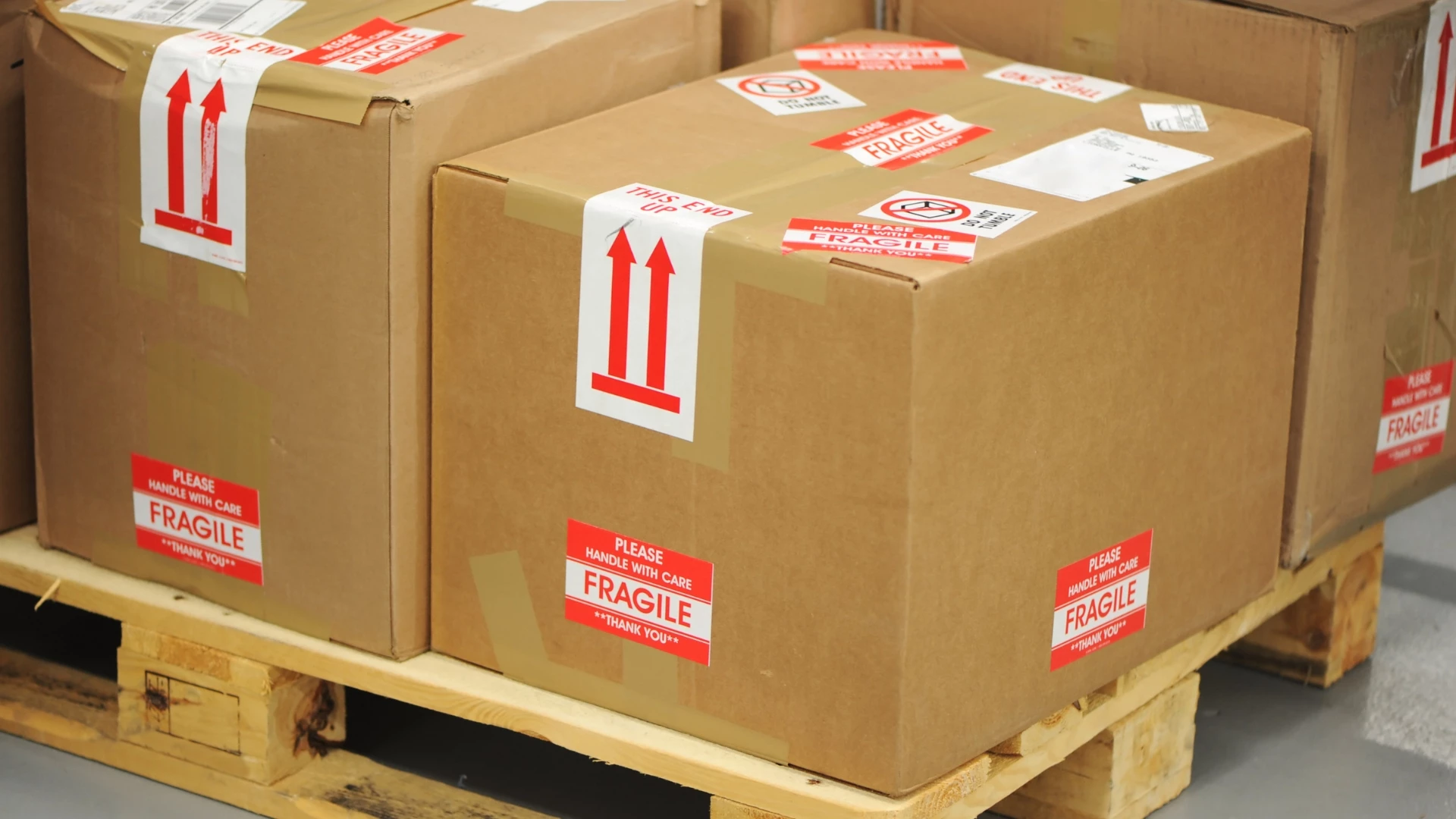
When it comes to shipping perishables, more is needed than just putting them in a cardboard box of the right size, attaching a label, and leaving them with the nearest carrier, hoping for the best. Successfully shipping perishable food, pharmaceutics, cosmetics, fresh flowers, and plants requires careful planning, proper packaging, and a reliable shipping method that can handle possible temperature and moisture fluctuations.
Step-by-Step Shipping Plan
1. Determine what type of food you’re dealing with
Are they frozen, refrigerated, or simply dry-perishable? Depending on the answer, you may require an insulated container, cold packs, or even an extra protection solution.
Equally important is determining the shelf life and temperature sensitivity of the product. These data will instruct the carrier on the required shipping process.
2. Use proper packaging
Begin by selecting an insulated container, such as a foam container or vacuum-sealed shipping container, to maintain stable temperatures. Cold packs work best for refrigerated items, while dry ice is ideal for frozen shipments. In the case of dry ice, always follow shipping regulations for its usage.
Creating an airtight seal will further protect perishables from contamination and moisture. Wrap food items securely using bubble wrap or other cushioning materials to prevent bruising or crushing. Placing everything inside a sturdy corrugated cardboard box adds extra protection against vibrations and temperature swings. Focus on proper packaging to maintain controlled environments and visibility during transit.
3. Choose the right carrier
The right carrier is half the success of your shipping. Choose a carrier specializing in temperature-controlled transportation and handling perishable items under various conditions. Experienced carriers understand how to send perishable food without risking spoilage, and they often have protocols for dealing with extreme temperatures and maintaining ideal humidity levels.
Confirm that your chosen carrier provides real-time tracking, controlled environments, and visibility throughout the journey. This allows you to monitor the location of your perishable goods and quickly address any potential delays or issues. A carrier with a proven track record in perishable shipping will help keep your supply chain efficient and consistent.
Finally, consider how the carrier’s logistics services integrate with your existing processes. A carrier offering prompt transportation services, reliable shipping containers, and expertise in handling sensitive shipments will ensure your food items arrive fresh and intact.
4. Select a shipping method
For large quantities or regional deliveries, consider refrigerated semi-trucks. Equipped with temperature control tools, these trucks ensure your cold food, flowers, plants, or other perishable goods remain at optimal conditions during transit.
For highly sensitive, short-shelf-life items, like gourmet cheese or seafood, go with express shipping services, either overnight or same-day delivery. Such speed minimizes exposure to extreme temperatures or fluctuating humidity levels, allowing you to ship perishable food with greater confidence. Controlled environments and visibility offered by reputable carriers ensure that such conditions as extreme heat or poor handling won’t compromise quality.
5. Label the package
Your carrier will need instructions on how to handle your shipment. Add clear labeling once your food items or perishable goods are properly packed in a foam container or corrugated cardboard box. Mark the package as “PERISHABLE” clearly, so that everyone handling it understands the importance of careful treatment. Include detailed instructions like “Keep Refrigerated” or “Do Not Freeze” to guide handlers and ensure they maintain the correct temperature range.
Proper labeling will help you avoid confusion and reduce the risk of damage or spoilage caused by mishandling. Visible warnings help transportation services, carriers, and delivery personnel provide extra protection. Adding labels that mention “Fragile” or “Handle with Care” can also signal the need to protect delicate flowers or maintain controlled humidity levels.
Use large, legible text, and consider placing labels on multiple sides of the shipping container for better visibility. These simple actions ensure that your perishable items arrive fresh, intact, and ready to delight recipients.

6. Monitor regulations
Different regions have varying requirements for shipping food, so research the rules governing temperature-controlled shipments, handling perishable items, and transporting products subject to health or agricultural inspections. For instance, when learning how to ship meat or handle other animal-based products, you will need to follow USDA guidelines or equivalent standards in your region.
Sometimes, international shipping may require specific documentation, inspections, or certifications. Properly labeled shipments, foam containers meeting certain specifications, and adherence to humidity levels or extreme temperature controls keep your supply chain running smoothly. And vice versa, failing to comply may result in delays, rejected shipments, or fines.
Consistent regulation monitoring provides controlled environments and visibility throughout each stage of the process.
7. Plan for delivery timing
Strategic scheduling prevents transit delays. Avoid shipping during weekends, holidays, or periods when transportation services may be limited. If carriers are stretched thin or closed, your perishable food may linger in warehouses or trucks, raising the risk of spoilage. Instead, aim for mid-week departures when shipping services and cold chain logistics providers typically operate at peak efficiency, allowing you to ship perishable food promptly.
It is good to confirm that someone will be available to receive the package upon delivery. If recipients anticipate the arrival of perishable goods, the carrier can promptly refrigerate them and store them properly to preserve their quality.
A rule of thumb – when planning delivery timing, consider the shelf life of your products. Thoughtful scheduling reduces risks and ensures everyone enjoys a successful, well-timed, perishable shipping experience.
8. Test your process
Last but not least, before sending large volumes of perishable goods or scaling up your logistics services, conduct a trial shipment. This practical test will help verify that your chosen insulated container, cold packs, and overall packaging techniques effectively maintain stable temperatures. Trying out different shipping methods, carriers, or transportation services can also reveal weaknesses, such as insufficient cushioning materials, poor insulation, or inadequate labeling.
Do the trick by sending a small batch of food items or non-perishable food alongside perishable ones to gauge how conditions like extreme heat or varying humidity levels affect different products. Note how long it takes for items to reach their destination, how well cold food maintains freshness, and if recipients receive them in pristine condition.
Analyze your results and make any necessary adjustments. You may need a sturdier corrugated cardboard box, thicker bubble wrap, or a more reliable carrier. After a few trial shipments, you’ll gain the confidence and know-how to protect perishables and meet customer expectations every time.
Back to blogYou may also be interested in

Solving the Refrigerated Freight Bottleneck: A Customer’s Guide to Reefer Expedite
The refrigerated freight is one of the most demanding segments of logistics. Unlike dry freight, temperature-sensitive goods don’t get second chances. If a load arrives late or the temperature drifts outside compliance ranges, the shipment can lose its entire value. For customers, that means one mistake can turn into thousands of dollars in losses and […]

Airport Delays and Temperature Risk: How Forwarders Mitigate the Gap
Airports are the heartbeat of global trade, connecting perishable goods to every corner of the world. But for refrigerated freight, airports are also one of the riskiest points in the journey. Unlike long-haul reefer trucking, where temperature can be monitored and maintained throughout, airports introduce multiple variables, such as customs clearance, handling procedures, flight schedules, […]
